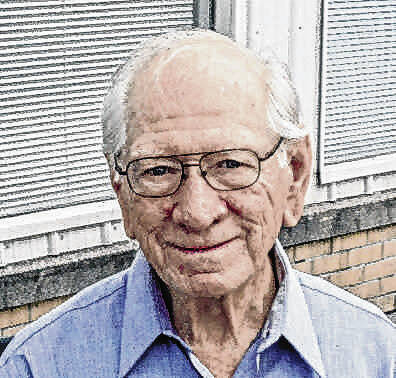
Don Hill
What time is it?
I don’t have the time. Time will tell. Time is money. Dinnertime, nighttime, bedtime, any time, etc. How important is time to you? Do you punch a time clock? Do you watch for the 5 o’clock hand to get to that magical time? TGIF.
Well, I guess it depends on your daytime activities. Since I’m retired, as many of my readers are, then time may be thought of in years instead of days. My friend down in Florida has a wall clock with all of the numerals falling to the bottom. The inscription says, “Who Cares!”
I’m not going to get into the definition of time. It’s too complicated for my little mind to comprehend. I’m just sticking to how we tell time.
Since you asked, here’s a little history of the clock and telling time. I suppose people just looked up at the sun and came up with a method of knowing when to go home for dinner. Maybe their shadows told them something. I guess they didn’t have to worry about daylight saving time.
Seems the Egyptians used the idea of their shadows by constructing tall obelisks that cast shadows and came up with 10 sections during the day and added another for sunrise and one for twilight. Thus, the 12-hour day.
The Babylonians also liked to work with numbers and maybe divided things up even more, such as minutes and seconds. They always wanted to be on time for dinner. Somewhere, some wise guys put all of these markings in a circle and created the sundial. I had one. I would go out at night with a flashlight to tell the time. Just kidding.
Seems old Archimedes had a bunch of good ideas back around 300 BC. He came up with gears and mechanical mechanisms to create an astronomical timepiece. It’s said it even had birds like a cuckoo clock. It took another 600 years before someone came up with the sand hourglass. I’ll bet someone lounging around in an oasis came up with that.
Folks in medieval Europe used candles with markings along the length of them. No, no, none of that burning the candle at both ends stuff. Now, we have jumped up to 1092 when Su Sung (he was a Chinaman) came up with the water clock. You know, maybe like the one at the Indianapolis Children’s Museum. It’s fascinating to watch. No pun intended.
Now, let’s get to what we think of as a clock. Or as some refer to the term timepiece. It’s usually round with numbers going around from 1 to 12. Yes, I know, some grandfather clocks have Roman numerals. Most have two hands. Some have more. Why do we call them hands instead of arms? I don’t know. They also have a face. There are wall clocks, alarm clocks, kitchen clocks, Big Ben clocks, atomic clocks and clocks of all sizes. They date back to 1490 when Pete Hele invented the first mainspring in Nuremberg, Germany.
There are little clocks that we call watches. Wristwatches, stopwatches, gold watches, etc. Some people who retire get a gold watch. Just when they don’t need one. Mary got a wall clock built into a plaque. I just got a plaque. It doesn’t do anything.
One of my daily duties while in the Air Force was to get a time hack every morning. I would contact the U.S. Naval Observatory in Washington, D.C., and set our clock to the second. Very important in the military. Which is another method of telling time. The military method doesn’t stop at 12 noon and starts over. It continues to 13 and goes to 24.
Back in my day, you had to learn to tell time. You got to say things like, “a quarter after; half past; a quarter til,” and when both hands were pointing straight up, it didn’t tell you whether it was noon or midnight. You had to figure that out yourself. I won’t bother writing about digital timepieces. It’s a waste of time.
Just to finish up, I thought I would toss in something that would ease your mind. It’s the clock tower at Seymour High School. I know you envisioned giant gears and huge weights and maybe even Quasimodo, just as I had always envisioned. Sorry, It’s probably smaller than your kitchen clock. Yes, I climbed up there to store some prom stuff. So disappointing.
So if I have the time, I’ll send this to The Trib. I hope you have time to read it.
Don Hill is a resident of Seymour and a longtime volunteer for Southern Indiana Center for the Arts. Send comments to [email protected].
